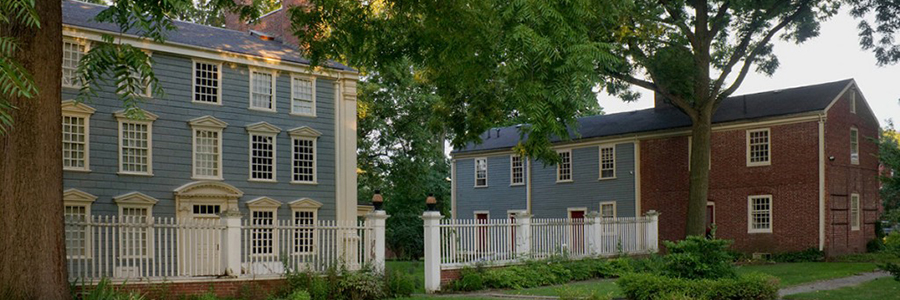by Kyera Singleton, Executive Director of Royall House & Slave Quarters
My first introduction to the Royall House & Slave Quarters was in the summer of 2019. I happened to be in town for an academic conference in which we were all encouraged to take a tour of the Royall House & Slave Quarters by Dr. Kendra Field, co-director of the African American Trail Project at Tufts University. As a scholar who is deeply invested in the history of slavery, and as someone who grew up in New Jersey, I was simultaneously shocked and intrigued to learn that there remained standing Slave Quarters in the North.
I, immediately, pulled out my phone to google the site. The description read as follows:
In the eighteenth century, the Royall House & Slave Quarters was home to the largest slaveholding family in Massachusetts and the enslaved Africans who made their lavish way of life possible. Today, the Royall House & Slave Quarters is a museum whose architecture, household items, archaeological artifacts, and programs bear witness to intertwined stories of wealth and bondage, set against the backdrop of America’s quest for independence.
The museum made it clear from their website that I would not just be going on a tour of a beautiful historic home in which the history of slavery, and the forced labor of those who were enslaved, were an afterthought. Thus, I knew my first encounter with the Royall House & Slave Quarters was going to be special.
Sitting in the Slave Quarters reflecting upon the tour, I couldn’t help but feel profoundly moved. I was captivated by the ways in which the tour incorporated the lives of the enslaved people from start to finish including where they slept, the roughness of the fabric of their clothing, the worn set of stairs they went up and down multiple times a day, and pieces of tile they fashioned into game pieces for stolen moments of leisure. In fact, I left wanting to know more. What I didn’t know was that my first encounter would not be my last.
As the new Executive Director, I have the exciting and challenging task to further the amazing work that is already underway at the RH&SQ through strengthening our current collaborations, developing new programming, and fostering new partnerships.
You’ll be glad to know I am already hard at work.
A little over a week ago, I had the distinct honor of representing the Royall House & Slave Quarters as the keynote speaker for the Black Heritage Trail of New Hampshire’s annual tour guide training. The Black Heritage Trail, which seeks to highlight the historical legacy of Africans and African Americans throughout New Hampshire, chose our museum as the keynote due to the way we center the lives of the enslaved women, children, and men who lived and labored at the Royall House. In fact, the same description on the website that led me to the doors of the Royall House & Slave Quarters led to the RH&SQ’s invitation to give the keynote address.
Education Coordinator Denise Moehring and I created a presentation that showcased all of the amazing work that is underway at our site. I want to leave you all with a few important reflections from the meeting.
I was asked, “How do you tell uncomfortable histories, and why is it important?”
For me, good history makes us uncomfortable. It challenges everything we thought we knew, and forces our world to expand. As a museum, it is our responsibility to not only tell the history of slavery, but also, to get it right. Therefore, you will not hear about any benevolent slaveholders when you come to the RH&SQ. Our job is to show the ways in which the institution of slavery helped create and sustain the wealth of the Royalls, while simultaneously highlighting the interiority of enslaved life.
Furthermore, we do not want anyone to leave believing that Northern slavery was unique to the Royall family. In fact, we want people to use the Royalls as an entryway to learn about how integral slavery was to Massachusetts’ economy and the political, social, and cultural lives of everyone who lived here. For us, the local is a way to think through the national and global realities of the slave trade and the North’s vital role in American slavery.
I believe documenting and telling uncomfortable histories offers a chance for connection, as opposed to disengagement. Thus, we must remain steadfast in our commitment to telling the truth even when we know very little about the enslaved women, men, and children who created the conditions in which the Royalls lived so lavishly. In fact, we hope to embark on learning more about the enslaved people who lived at the Royall House, and their larger connection to the thriving political Black community in Boston. We have already begun this work through recounting the story of Belinda Sutton, and her quest to receive a pension from the estate of Isaac Royall, Jr.
Ultimately, we not only have a responsibility to the past but also to the present. It is just important for us to tell the story of slavery as it is to show how the legacy of slavery manifests today through inequality. Thus, there is still so much more to learn and lots to do!
I am truly excited to embark on this journey as the Executive Director, and I can’t wait to meet each and every one of you during this process.
May 2020

